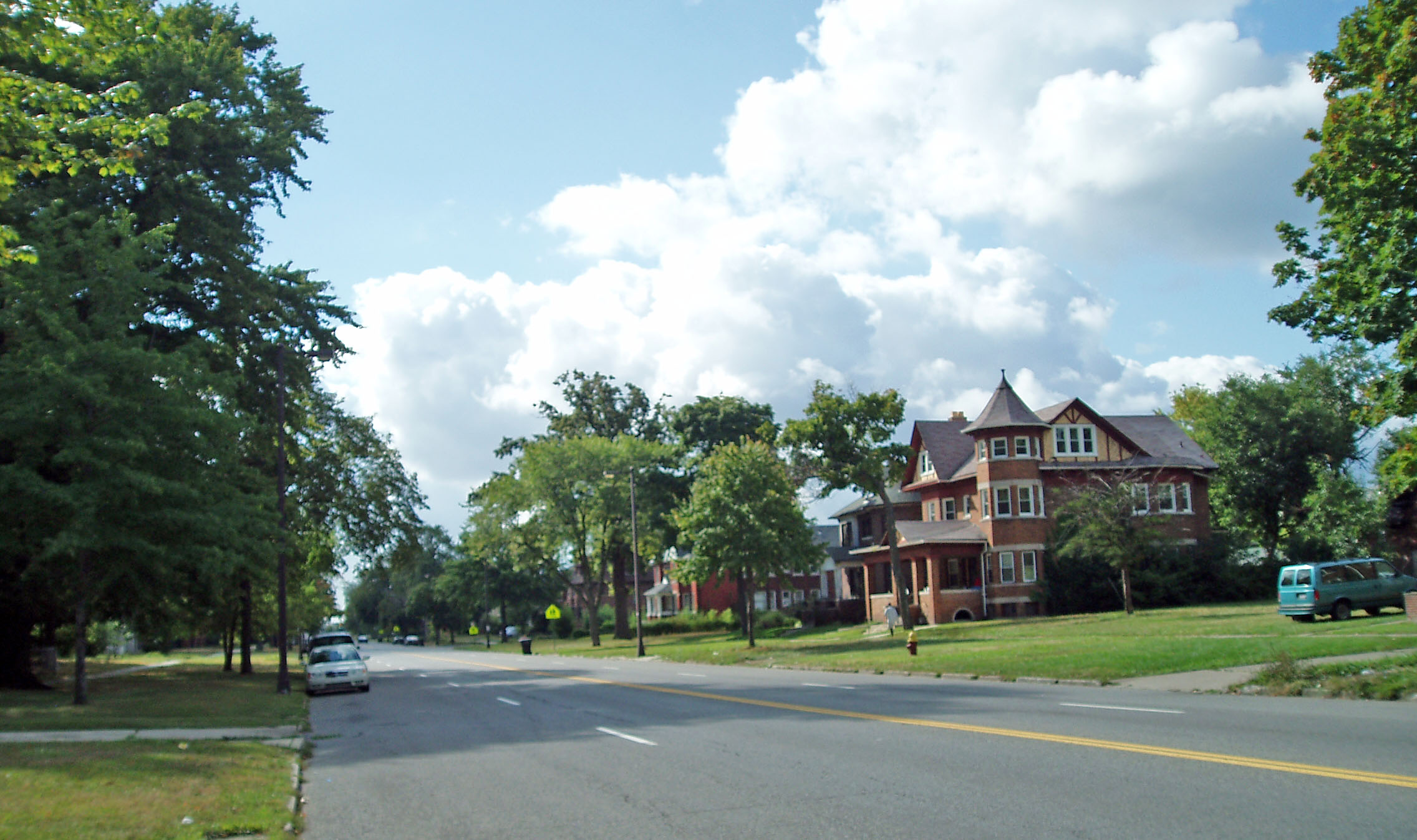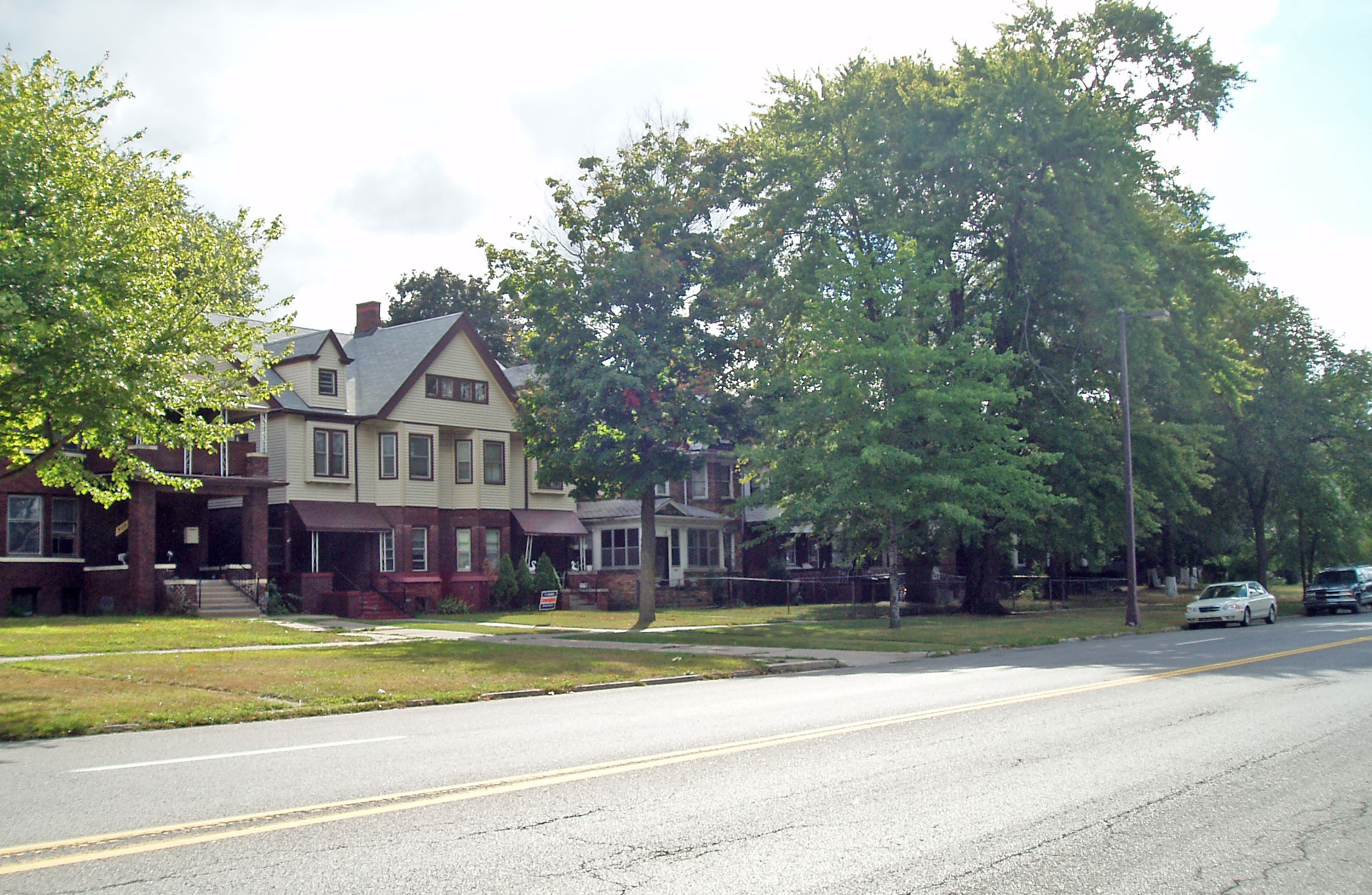

The three Nineteenth Century designers or architects who had the greatest impact upon cities as we know them in the Twenty-first Century, helped to shape Detroit. Nineteenth century cities were dirty congested places. Thousands of horses pulled carts, carriages and trams throughout the city, each of them depositing substantial amounts of offal on the streets daily. Soft coal was used to fire the furnaces of factories and to heat homes. There was no zoning and because there was no efficient local transportation until the last decade of the Nineteenth Century when electric street cars went into operation, most people had to live close to where they worked. So rail lines, factories, warehouses and homes shared the same space. A few traces of that Nineteenth Century style of urban land use are evident today along Detroit’s waterfront south of the Ambassador Bridge.
John Law Olmstead was America’s great
park designer. Parks offered residents a chance to breathe clean air and
escape the dirt and odors of their
own neighborhoods. Central Park in New York, Prospect Park in Brooklyn, Mount
Royal in  Montréal,
the Emerald Necklace chair of parks in Boston and Belle Isle here in Detroit
are his legacy.
Montréal,
the Emerald Necklace chair of parks in Boston and Belle Isle here in Detroit
are his legacy.
Daniel Burnham was not only one of the innovative architects who helped designed this nation’s earliest skyscrapers, but was one of the key founders and leaders in the City Beautiful movement that developed after the 1893 Chicago World’s Fair. This was an attempt to create attractive, appealing spaces in the midst of the urban chaos. Burnham served on the panel appointed by Detroit Mayor Brietmeyer that designed the city’s Cultural Center.
Baron Georges-Eugène Haussmann was
the designer who produced the Paris that we now visit. In 1852, he began
to develop a plan to make Paris into a
beautiful modern city. In the 1860s, he won approval for the French Government
to tear down or drastically remodel late medieval Paris. In its place, he designed
the great parks, the broad streets and the grand boulevards that now constitute
Paris. He specified a height limit for building and had a number of major anchoring
elements constructed, including the Arc de Triomphe and the Paris Opera House.
Importantly, he realized the importance of railroads and the need to separate
rail from vehicular traffic. In the late Nineteenth Century, the world’s
most impressive array of beautiful rail stations were built in Paris, rail
stations that are—with a few exceptions—still hosting trains
and their passengers.
As early as 1876, some Detroit residents were aware of the successful efforts
of Haussmann and proposed that some of his concepts be brought to their city.
They proposed a grand boulevard that would surround the settlement known as
Detroit. It would be, they intended, lined with elegant trees and marvelous
mansions. Needless to say,  while some favored this idea and were knowledgeable
about Haussmann’s contributions to the beautification of Paris, other
strongly opposed this idea. Detroit legislator James Randall included a rider
calling for Grand Boulevard in the law that transferred control of Belle Isle
from the state of Michigan to the city of Detroit. The local government, however,
was influenced by property owners and refused to begin work on the road that
was designed to ring the city. A few individuals began work on Grand Boulevard
and some built homes
along its proposed route. Finally, in 1891, Mayor Hazen Pingree adopted the
idea and devoted city resources to creating the twelve
mile road that stretches from the Detroit River on the south to Belle Isle
on
the north.
while some favored this idea and were knowledgeable
about Haussmann’s contributions to the beautification of Paris, other
strongly opposed this idea. Detroit legislator James Randall included a rider
calling for Grand Boulevard in the law that transferred control of Belle Isle
from the state of Michigan to the city of Detroit. The local government, however,
was influenced by property owners and refused to begin work on the road that
was designed to ring the city. A few individuals began work on Grand Boulevard
and some built homes
along its proposed route. Finally, in 1891, Mayor Hazen Pingree adopted the
idea and devoted city resources to creating the twelve
mile road that stretches from the Detroit River on the south to Belle Isle
on
the north.
As you drive this route, you see that many elegant homes and a few mansions were built along its course. In 1919, General Motors helped to develop the New Center Area at the intersection of Grand Boulevard and Woodward where you find their former headquarters building and the Fisher Tower: both listed as National Historic Landmarks by the United States Park Service. The Packard Motor Car Company began construction of their headquarters building and massive assembly factory on East Grand Boulevard about fifteen years earlier.
The East Grand Boulevard Historic District
includes the buildings facing Grand Boulevard between Mack Avenue and East
Jefferson. There are a few moderate-sized apartment buildings and numerous
large homes that were among the most
elegant in the city when they were built; that is, between about 1900 and 1925.
By the 1920s, other areas of the city and the Grosse Pointes became attractive
residential areas for the rich so the appeal of living along Grand Boulevard
declined. In the Depression and again in World War II, some of these massive
elegant homes in this historic district were cut up into small apartments.
At present, a few of these homes are still used as single-family residences,
while others serve as group homes for those who need institutional care.
It will be interesting to see what happens to the East Grand Boulevard
as Detroit continues its transition into a Twenty-first Century
metropolis. Most of
these homes are structurally sound but they are, typically, too large for
one family and are currently not in a highly desirable location. A few of them
may be suitable for conversion into condominiums. The apartment buildings
listed
on the National Register of Historic Sites are included in this historic
district: Kingston Arm Apartments at 296 East Grand Boulevard; El
Tovar Apartments at
320 East Grand Boulevard and St. Paul Manor Apartments at 356 East Grand
Boulevard.
City of Detroit Designated Historic District: Not listed
State of Michigan Registry of Historic Places: P29,448, Listed November 30,
1999
State of Michigan Historical Marker: None
National Register of Historic Sites: #99001468, Listed November 30, 1999
Use in 2008: This residential area includes some large homes used as
individual or institutional residences and several apartment buildings.
Photograph: Ren Farley, September 6, 2008
Description prepared: October, 2008
Return to City of Detroit Historic Designations
Return to Federal Register of Historic Places
Return to Michigan Registered Historic Districts